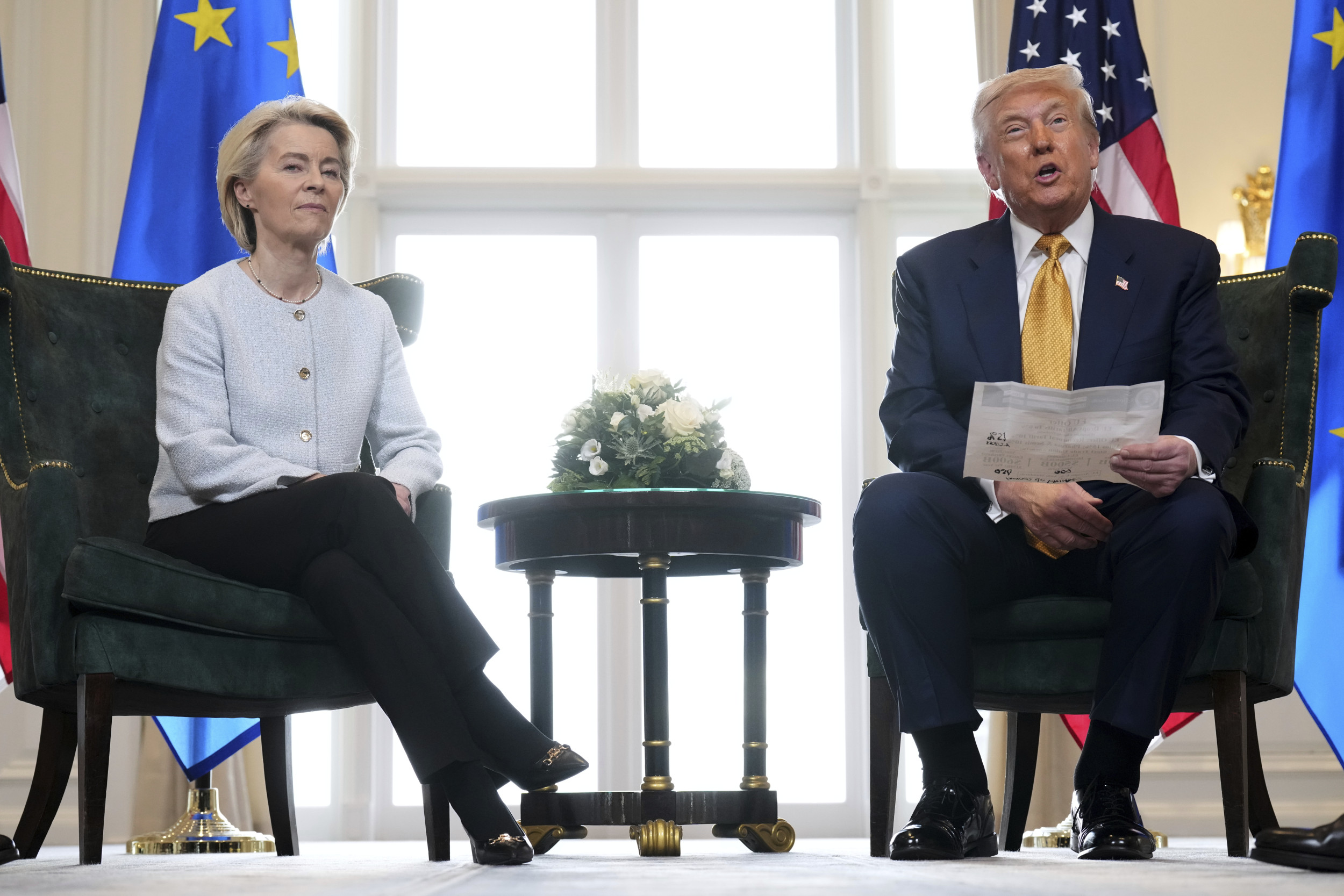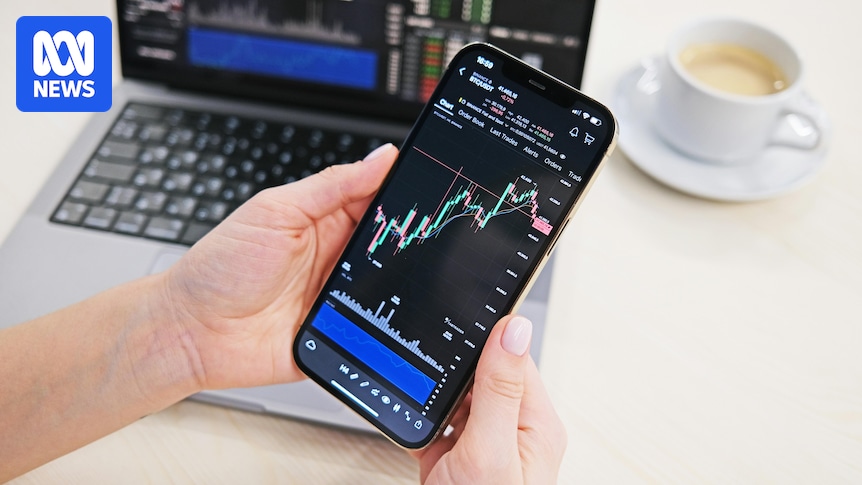Financial markets around the world welcomed a framework trade agreement on Monday between the United States and the European Union with a 15 percent U.S. tariff on most EU goods and billions of dollars of European investment.
U.S. President Donald Trump and European Commission President Ursula von der Leyen announced the agreement on Sunday at Trump’s luxury golf course in Scotland following months of difficult negotiations.
Why It Matters
The deal averts a devastating trade war between the two economies, which represent the world’s largest trade volume, encompassing hundreds of millions of people and trillions of dollars in commerce.
Trump had this month threatened to impose a 30 percent tariff on goods from the E.U., which would have meant American consumers facing higher prices on everything from French cheese to German electronics and Spanish pharmaceuticals.
The EU had prepared retaliatory tariffs on hundreds of American products, including beef, auto parts, beer and Boeing airplanes, which could have sent shock waves through global economies.
Jacquelyn Martin/AP
What To Know
The deal provides clarity for companies after months of uncertainty, and global markets breathed a sigh of relief as they opened on Monday, with stocks rising and the euro firmer.
S&P 500 futures rose 0.4 percent, and the Nasdaq futures gained 0.5 percent while the euro firmed against the dollar, sterling and yen. European futures surged almost 1 percent.
Under the deal, the EU seeks to invest some $600 billion in the U.S. and ramp up its purchases of U.S. military equipment and buy $750 billion worth of U.S. energy.
“I think this is the biggest deal ever made,” Trump told reporters in Scotland on Sunday.
Von der Leyen described Trump as a tough negotiator. She told reporters that the 15 percent tariff, which applied “across the board,” was “the best we could get.”
In Asia, MSCI’s broadest index of Asia-Pacific shares outside Japan was up 0.27 percent early on Monday, just shy of the almost four-year high it touched last week.
Japan’s Nikkei index fell 0.8 percent after hitting a one-year high last week when Japan struck its own trade deal with the U.S., which also included a 15 percent U.S. tariff on Japanese goods.
China’s blue-chip stocks rose 0.3 percent on Monday morning, and Hong Kong’s Hang Seng index put on 0.75 percent.
The Australian dollar, often seen as a proxy for risk appetite, was at $0.657 to the U.S. dollar, near an eight-month high set last week.
What People Are Saying
European Commission President Ursula Von der Leyen told reporters: “We should not forget where we would have been on the first of August. We would have been at 30 percent, and it would have been much more difficult to get down now to the 15 percent. Fifteen percent is certainly a challenge for some, but we should not forget that it keeps us the access to the American market, and what we are also doing intensively is diversifying to other regions of the world.”
Prashant Newnaha, a senior Asia-Pacific rates strategist at TD Securities, told Reuters: “A 15 percent tariff on European goods, forced purchases of U.S. energy and military equipment and zero tariff retaliation by Europe, that’s not negotiation, that’s the art of the deal. A big win for the U.S.”
Marc Velan, the head of investments at Lucerne Asset Management in Singapore, told Reuters: “A major tail-risk has now been defused. … Markets are interpreting this as a sign of stability and predictability returning to trade policy.”
What Happens Next
Trade negotiators from the U.S. and China—the world’s two largest economies—are due to meet in Stockholm on Monday. China is facing an August 12 deadline to reach an agreement with the Trump administration. Many other countries are racing to finalize deals before an August 1 deadline.

